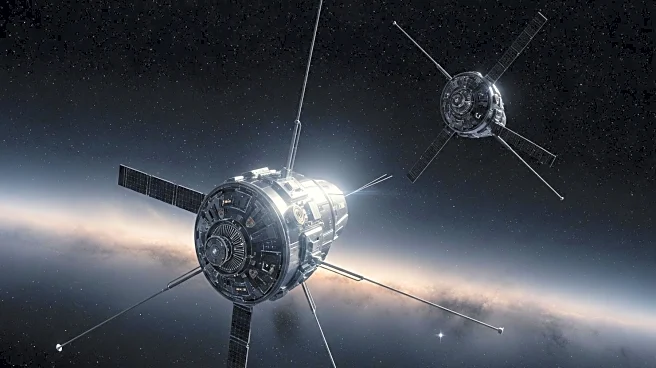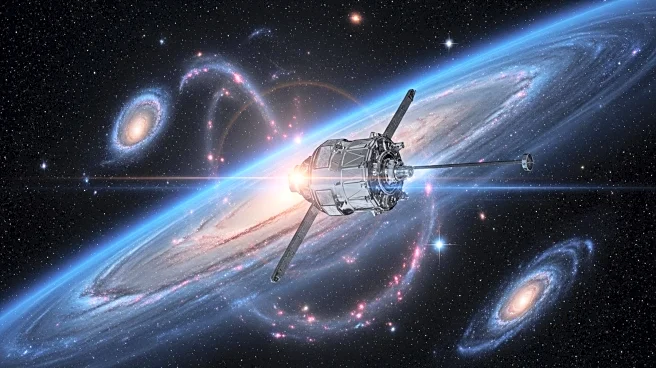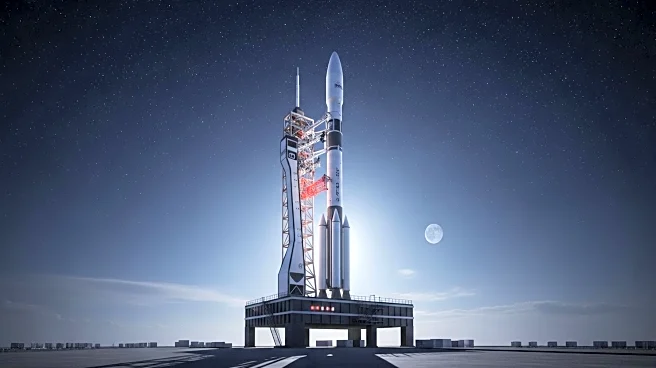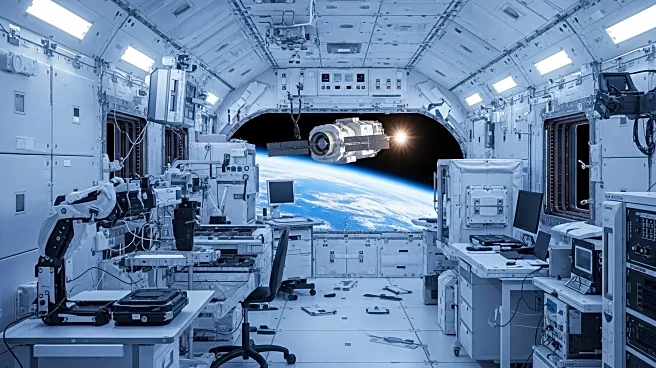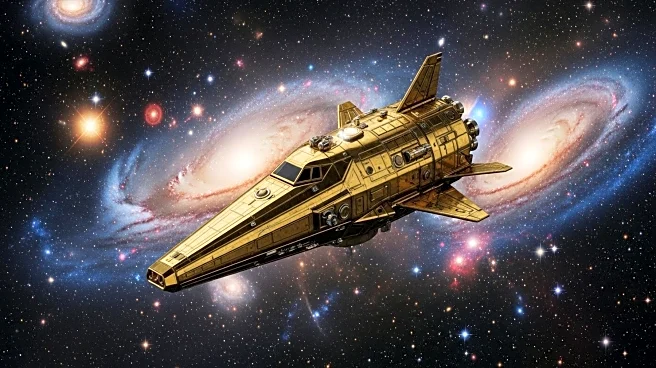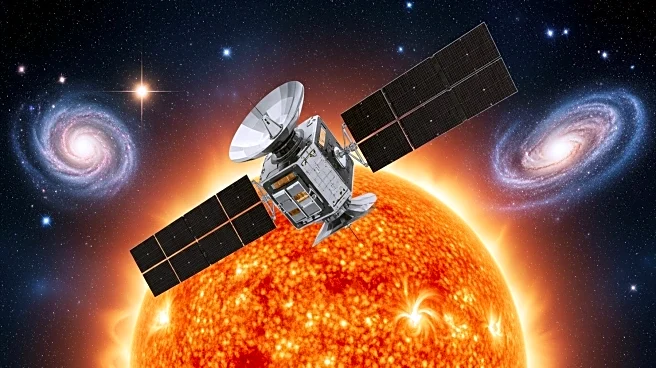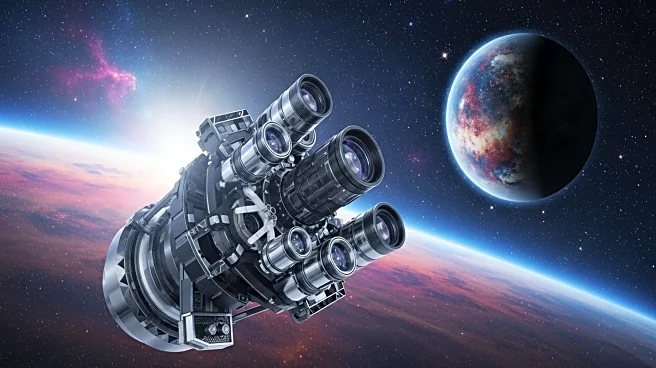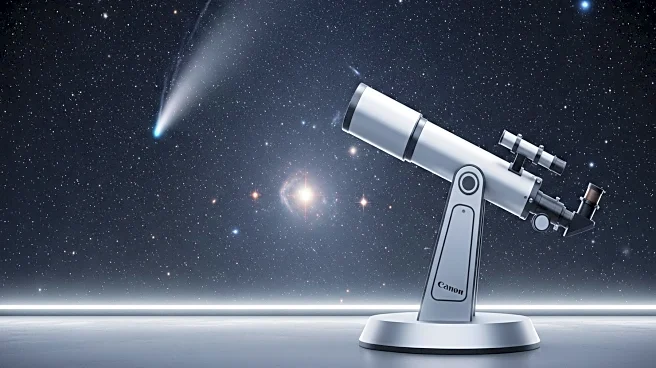What's Happening?
NASA's Voyager 1 and 2 spacecraft, which have traveled over 15 billion kilometers from Earth since their launch in 1977, are currently in interstellar space beyond the heliosphere, the Sun's protective bubble. Recent observations have revealed unexpected increases in electrical activity, including intense bursts of plasma waves and charged particles around the probes. These findings have sparked curiosity and speculation among scientists and the public alike. While NASA is investigating potential natural causes for these phenomena, some have speculated about the possibility of extraterrestrial influences, dubbing the signals as 'the first alien broadcast.' The Voyager missions continue to provide valuable scientific data from the edge of our solar system, contributing to our understanding of the interstellar environment.
Why It's Important?
The detection of unusual electrical activity by the Voyager probes is significant for several reasons. Scientifically, it offers insights into the conditions and processes occurring at the boundary of our solar system, which is crucial for understanding the transition into interstellar space. This information can help refine models of the heliosphere and its interactions with the interstellar medium. Additionally, the public's fascination with the possibility of extraterrestrial signals highlights the broader cultural and scientific interest in the search for life beyond Earth. The continued operation of the Voyager spacecraft, despite their age, underscores the durability and success of these missions in expanding human knowledge of the cosmos.
What's Next?
NASA scientists are expected to continue analyzing the data from the Voyager probes to determine the origins of the observed electrical activity. Further studies may involve comparing these findings with data from other space missions to better understand the heliosphere's dynamics. The scientific community and the public will likely remain engaged with updates from the Voyager missions, as any new discoveries could have profound implications for our understanding of the universe. Additionally, discussions around the potential for extraterrestrial life may be invigorated by these findings, prompting further exploration and research initiatives.
Beyond the Headlines
The Voyager missions' ability to continue functioning and sending data after nearly five decades in space is a testament to the ingenuity and foresight of the engineers and scientists who designed them. This longevity allows for continuous data collection from a region of space that is otherwise difficult to study. The missions also highlight the importance of long-term investment in space exploration, as the data collected over decades can lead to unexpected discoveries and advancements in our understanding of space. Furthermore, the public's interest in the possibility of alien signals reflects a deep-seated curiosity about our place in the universe and the potential for life beyond Earth.
